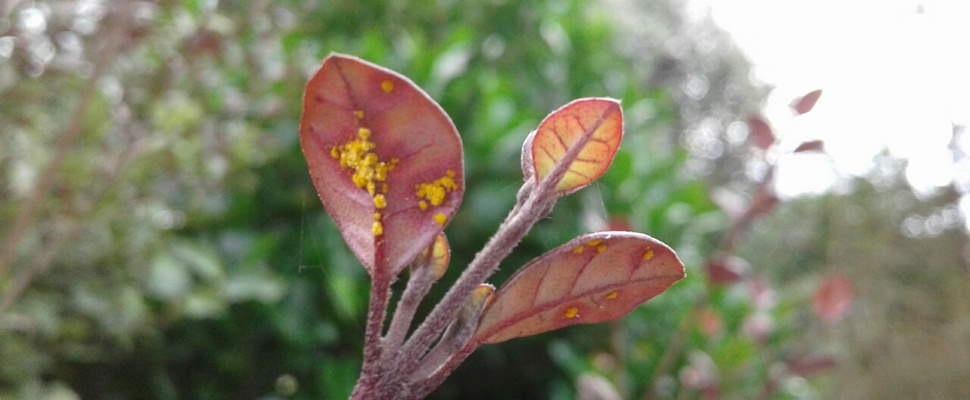
Managing the threat of myrtle rust in your garden
Warm, humid weather causing myrtle rust to spread
The arrival of warm, humid weather is causing the plant disease myrtle rust to appear across Auckland, including at the Auckland Botanic Gardens.
Myrtle rust is a serious fungal disease that affect plants in the myrtle family including natives like pōhutukawa, manuka and rātā and exotic plants like feijoa, lilly pilly and guavas.
Auckland Botanic Garden conservationist Emma Bodley says there are things we can do in our own gardens to protect these plants and slow the spread of the disease.
Step one is get to know your myrtles. If you need help with identifying them, you can use the iNaturalist app or email us photos of your plant for identification.
Step two is to avoid planting myrtles in your garden, especially those that are highly susceptible to the disease, species in the Lophomyrtus (plants like ramarama, rōhutu) and Syzygium genus (like lilly pilly). Fewer of these plants should mean fewer fungal spores in the environment.
Step three is only prune your myrtles in winter, as this is when myrtle rust is less active so it gives your plants time to put on new growth without lots of myrtle rust around.
You can learn more about the disease and how to identify it at www.myrtlerust.org.nz/.
And to get a sense of how serious this disease is, and how rapidly it can attack its hosts, watch a video 'Mate Tipu, Mate Rākau'* about the almost complete loss of ramarama on the East Coast due to myrtle rust (in only three years).
* The film is made by Toi Taiao Whakatairanga, a cross-disciplinary collaborative research and arts project. The project integrates practices from the arts, science, and te ao Māori to raise awareness of biological threats to New Zealand’s ngahere, and wider ecological systems. Toi Taiao Whakatairanga recognises the potential and role the arts has in promoting care for, the natural environment.
Banner image courtesy of www.myrtlerust.org.nz/